Ducati 999R
With Ian Falloon
The 999 replaced Ducati’s seminal 916 series for 2003. Pierre Terblanche was entrusted with the project and, as expected, the 999 retained many of Ducati’s trademark features but was purposefully long, low, and narrow to reduce frontal area.
For the first time, a sports bike was ergonomically designed with the rider an integral component and included five-way adjustable footpegs and, on Monoposto versions, a seat/tank unit that slid fore and aft 20 mm to adjust to the height of the rider. With 30 per cent fewer parts, simplification and ease of maintenance were primary considerations.
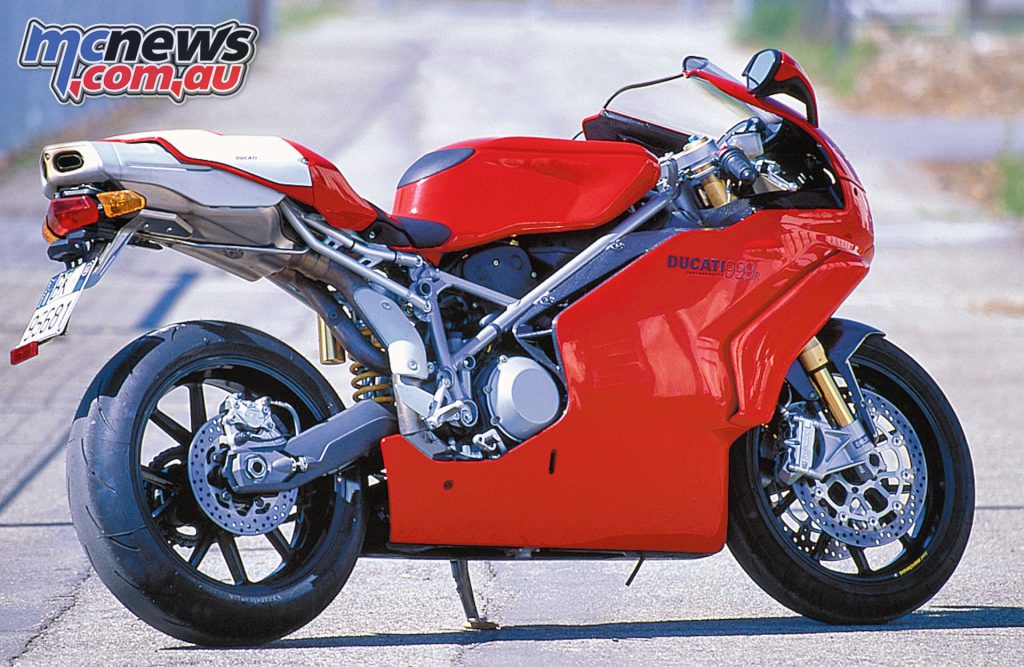
Powering the 999 were Testastretta engines very similar to those of the 2002 998. The homologation special 999R retained the shorter stroke 104 x 58.8 mm 999 cc 139 horsepower engine. While retaining the signature steel trellis frame, the swingarm was now double-sided, and the chassis was designed to place more weight on the front wheel.
As on the 998, the front fork rake was adjustable due to an eccentric in the steering head, altering the trail without affecting the 1420 mm wheelbase. The 43 mm front fork and rear suspension on the 999R were Öhlins, and the 999R included racing-style radial Brembo front brake calipers for the first time on a production Ducati.
In 2003, a limited edition 999R Fila was also released. Celebrating 200 World Superbike victories, it was offered in the livery of Team Ducati Fila. Updates over the standard 999R included racing-type forged wheels, a titanium headlight assembly, a carbon-fibre fairing, and a racing exhaust with a remapped CPU.
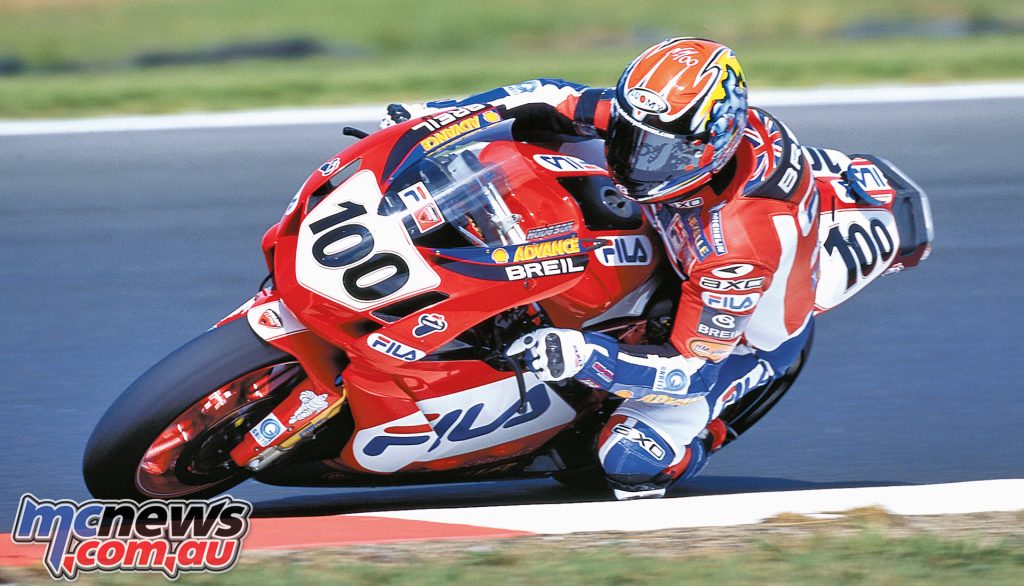
In the 2003 World Superbike Championship, the 999 was an immediate improvement over the 998. Attention to weight distribution and lowering the centre of gravity, along with the longer swingarm and wheelbase, contributed to the machine’s improved stability under braking and acceleration.
Neil Hodgson easily won the World Superbike Championship with 13 victories, and with Ducatis taking every round, it was no surprise to see it nicknamed “The Ducati Cup.” The 999 cc Testastretta motor in the 999F03 produced a claimed 189 hp at 12,500 rpm.
For the 2004 World Superbike Championship, Ducati signed 23-year-old James Toseland and Régis Laconi to ride the Fila 999F04s. The only official factory squad in the series, the 999s managed first and second in the championship, with Toseland becoming the youngest-ever WSBK champion.
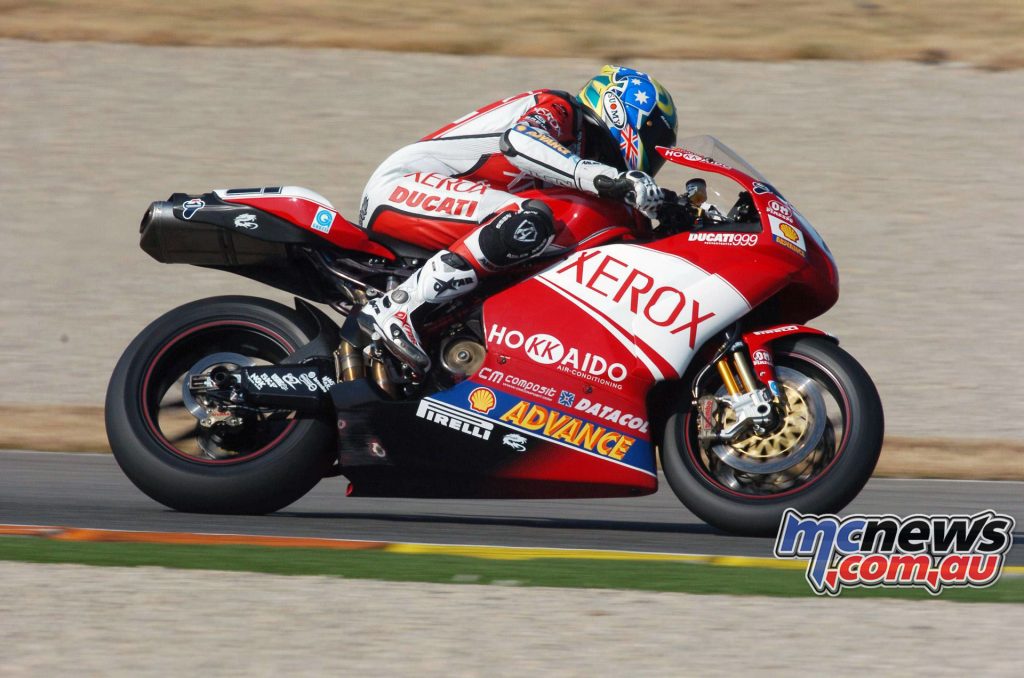
Heading the production Superbike line-up for 2005 was a new generation 999. Updates to the range extended from styling to chassis and engine improvements, and particular emphasis was placed on the 999R, with the intention of homologating it for AMA racing.
The 999R was now the most powerful production bike ever produced by Ducati. The fairing was redesigned, with a higher and wider cockpit without the two upper side air ducts and a higher screen. The lower fairing had more protective spoilers, while other updates included a lighter box-section swing-arm patterned on racing versions.
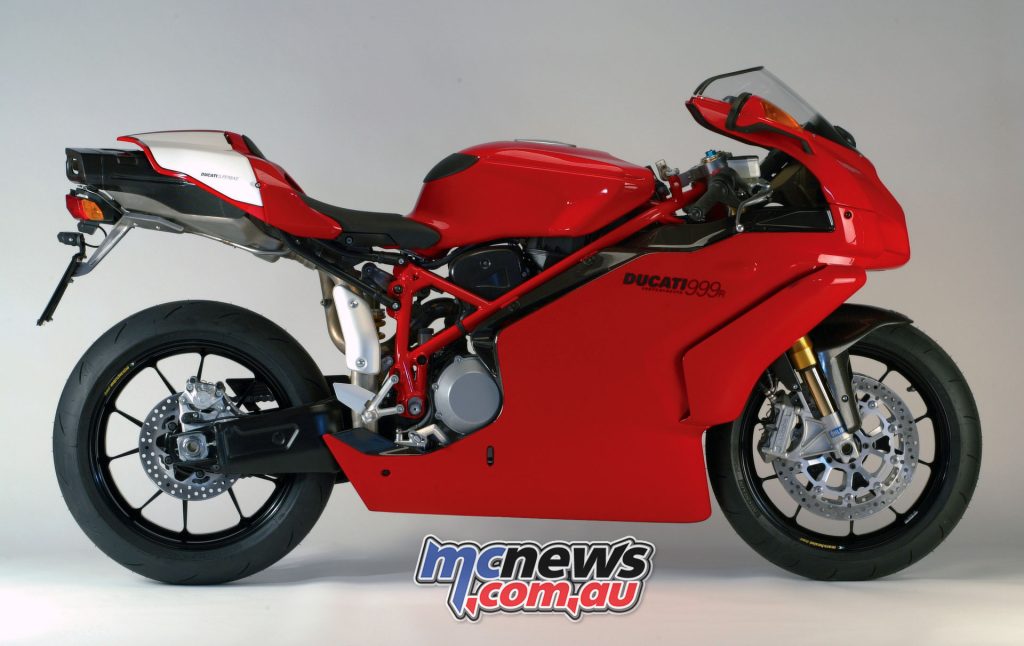
The 999R engine now produced 150 horsepower at 9,750 rpm and was modified to conform with AMA rules that required racing engines to be almost identical to the corresponding production units. Along with a new cylinder head, new con-rods and a more rigid crankshaft were added.
The compression ratio was increased to 12.45:1. Apart from the swing-arm, the chassis was similar to before, with the highest quality Brembo brakes, Öhlins suspension, and Brembo/Marchesini wheels. The fairing was carbon fibre and the 2005 999R was one of those bikes where Ducati got everything right.
Despite the 999R’s excellence, this didn’t translate into Superbike racing success. The World Superbike team was now sponsored by Xerox, with Toseland and Laconi riding. Updates to the World Superbike Factory 05 racers were mainly centred around electronics, and traction control made an appearance for the first time.
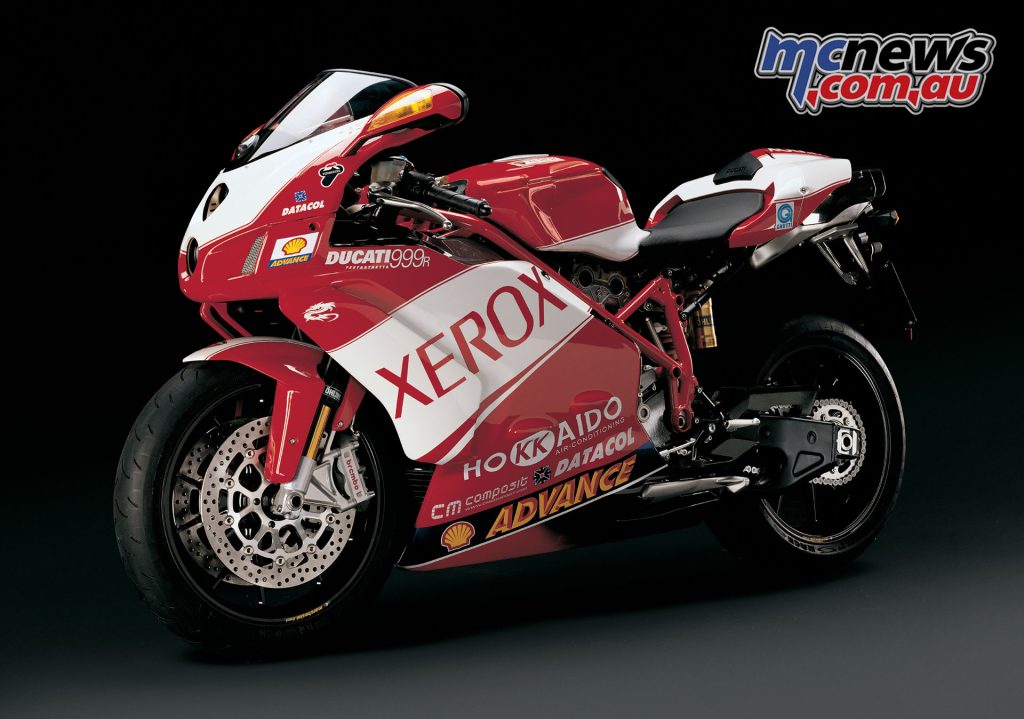
Engine improvements saw the power upped to 194 horsepower at 12,500 rpm, but the 2005 season was the most disappointing for the factory Ducati squad since 1988, Toseland finishing fourth and Laconi sixth.
With so many developments to the 999 occurring for 2005, there were only minor updates to this series for 2006. Heading the production Superbike line-up was the 999R Xerox, with the colours and graphics of the World Superbike team. Also distinguishing the Xerox from the regular 999R were a black anodized steering head and footrests, plus the red Brembo Racing logo on the radial brake calipers and mounts.
The rear Öhlins shock absorber was a racing type, with adjustable compression damping for high and low speed, an aluminium body, hydraulic adjustment of spring preload, and a top-out spring. The 999R engine still received specific cylinder heads, semi-cone valve adjusters, and stiffer con rods and a crankshaft featuring a racing-style lattice pattern.
Troy Bayliss made a return to the factory Xerox Ducati in the 2006 World Superbike Championship and soon stamped his mark, winning eight races in succession in the first half of the season. The 999 F06 was a triumph of evolution over revolution and Bayliss ultimately won the World Superbike Championship with ease, scoring 12 victories.
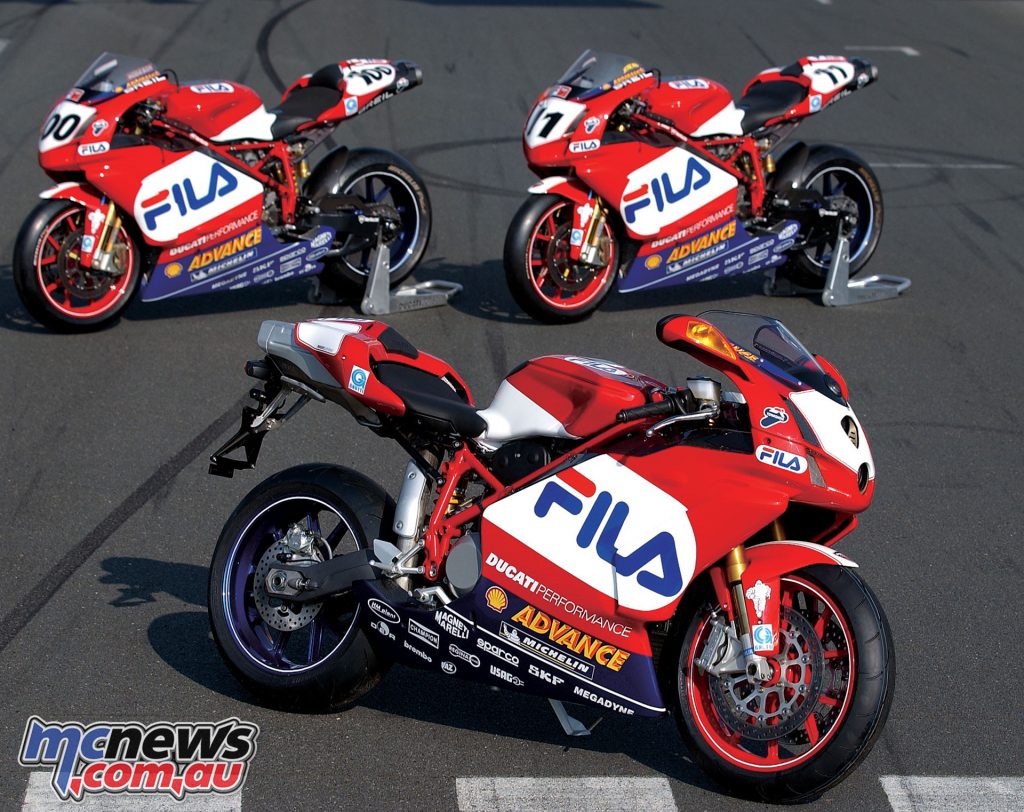
Now at the peak of its development, the 999 F07 represented the end of an era. The 999cc engine was still much as it had been over the past three seasons, but with the new 1098 already in production, the Xerox World Superbike Team was marking time during 2007.
Bayliss ultimately finished fourth in the championship with seven race wins. While the 999 series initially struggled for acceptance as the 916/996 replacement, it is now becoming more appreciated. The 999R, and the 2005 model in particular, was one of the most impressive of all Ducati’s homologation series.
Ducati 999R Specifications
| Ducati 999R Specifications | |
| Engine | Liquid-cooled, four-stroke 90-degree L-twin, DOHC, Desmodromic, four-valves per cylinder, belt driven, 999 cc |
| Bore x stroke | 104 x 58.8 mm |
| Compression | 12.3:1 |
| Induction | Weber Marelli EFI, 54 mm throttle-body |
| Torque | 108 Nm (79.7 ft-lbs) @ 8000 rpm |
| Power | 101 kW (139 hp) @10500 rpm |
| Gearbox | Six-speed |
| Final drive | Chain |
| Frame | Tubular steel trellis |
| Suspension | Öhlins 43 mm USD forks, fully adjustable, Öhlins monoshock, full adjustable 120/127 mm travel |
| Brakes | Dual 320 mm rotors, four-piston calipers, single 245 mm rear rotor, two-piston caliper |
| Wheels/Tyres | Y-shape five-spoke light alloy, 3.50 x 17, 5.50 x 17, 120/70-17, 190/50-17 |
| L x H x W | 2095 x 1110 x 730 mm |
| Wheelbase | 1420 mm |
| Seat height | 780 mm |
| Weight | 193 kg (dry) |























